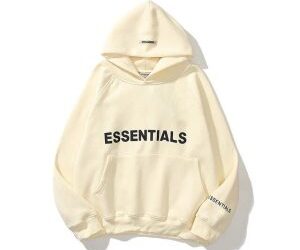Creating appealing packaging design plays a vital role in making food products stand out. The box that holds a pizza does more than protect the food—it communicates the brand’s story, quality, and personality. Effective artwork can attract customers instantly and build a memorable brand identity. Below are detailed tips to design stunning packaging that captures attention and leaves a lasting impression.
Understand the Brand Identity
Every successful design starts with a deep understanding of the brand. Before sketching any concept, it’s essential to identify what the brand represents and who the target customers are. Is the restaurant modern and trendy, or does it follow a traditional, family-oriented style? The design should reflect the emotions and values the brand wants to convey.
Color choice is one of the most powerful tools for representing a brand’s identity. For example, red and yellow often stimulate appetite and excitement, while green might suggest freshness or eco-friendliness. Fonts also carry emotional meaning; playful fonts work well for casual eateries, while bold, elegant typefaces suit high-end establishments.
Imagery should complement these choices. A rustic pizza place could feature hand-drawn illustrations or vintage patterns, while a modern brand might prefer clean lines and minimalistic shapes. The artwork should tell a story at a glance. A consistent tone across all brand materials builds trust and recognition.
Finally, the logo placement is crucial. It should be visible without overpowering the design. Placing it in the center or corner, depending on the layout, ensures that it’s noticeable yet balanced with other design elements. When a box aligns perfectly with the brand identity, customers can recognize it instantly—even from a distance.
Use Colors That Evoke Appetite
Color psychology plays a big role in pizza box design. Certain colors naturally trigger hunger and excitement. Warm colors such as red, orange, and yellow are commonly used because they make food appear more delicious and inviting. They attract attention and evoke feelings of comfort and satisfaction.
However, it’s important not to overwhelm the design. Balance is key. Using neutral tones like beige, brown, or white as background colors can help make the warm tones pop without being too intense. These neutral shades also suggest cleanliness and simplicity, which customers associate with quality.
Cool colors such as blue or green can be used carefully. Blue is rarely used in food packaging because it suppresses appetite, but in small amounts, it can convey freshness or trust. Green works perfectly when the brand focuses on organic or natural ingredients.
Contrast also matters. A bright design with good color balance will stand out from competitors. The combination of dark and light hues can highlight important elements like the logo or special offers. A well-thought-out color palette ensures that the artwork looks appealing under different lighting conditions—whether on a delivery bike, shelf, or table.
Choose Readable and Unique Typography
Typography might seem like a minor detail, but it can make or break the entire design. Fonts help set the mood and communicate the brand’s character. When customers glance at a box, they should instantly get a sense of the restaurant’s personality.
Readability is the first priority. Fancy fonts with too many curves or decorations may look artistic but can be difficult to read. Clean, bold typefaces are better for main headings or brand names, while decorative fonts can be reserved for small accents.
Font pairing also creates visual interest. For example, combining a bold headline font with a lighter script for supporting text adds variety without clutter. Designers should also pay attention to spacing, alignment, and letter size. Text that’s too close together can look crowded, while text that’s too far apart may feel disconnected.
Another key point is consistency. The same font styles should be used across all branding materials. This helps build recognition and strengthens brand identity. Avoid using too many different fonts; two or three are usually enough to create harmony.
Incorporate Eye-Catching Illustrations
Illustrations bring life and personality to packaging. They can transform a plain surface into a storytelling canvas. Creative visuals help customers imagine the delicious flavors inside even before opening the box.
Hand-drawn illustrations add warmth and a personal touch. They make the design feel authentic and approachable. This style works especially well for brands that emphasize homemade or artisanal food. On the other hand, vector or digital illustrations create a sleek, modern look suitable for urban or fast-paced brands.
The choice of imagery should match the brand’s personality. For example, sketches of ingredients like tomatoes, cheese, or herbs can showcase freshness. Illustrations of chefs, ovens, or dining scenes can evoke the experience of enjoying a freshly baked meal.
Color plays a vital role here too. Using a limited color palette keeps the artwork cohesive and prevents it from looking messy. Adding subtle textures or gradients can enhance depth and realism.
Balance Minimalism and Detail
A well-designed box should be both attractive and easy to understand. Minimalism helps achieve this balance. Too many details can overwhelm the viewer, while too few can make the design appear dull. The goal is to find a middle ground that feels modern yet expressive.
Minimalist designs use clean lines, bold shapes, and limited colors. They convey confidence and sophistication. When done right, even simple patterns can look elegant. However, minimalism should not mean empty space without purpose. Each element should serve a clear visual function.
Detailed designs, on the other hand, can add richness and excitement. Illustrations, textures, or patterns give the design character. To prevent clutter, designers can highlight detailed sections while keeping other areas simple.
White space is a key part of balance. It gives the eyes room to rest and directs attention to important features like the logo or tagline. It also adds a sense of freshness and professionalism.
Add Texture and Finishing Effects
Texture and finish can take packaging from ordinary to premium. Even a simple design can look luxurious with the right surface treatment. The way light interacts with the material can enhance the overall visual and tactile experience.
Here are some popular finishing techniques:
- Matte Finish: Creates a soft, elegant look and reduces glare. It feels smooth and modern.
- Gloss Finish: Adds shine and vibrancy, making colors pop and attracting more attention.
- Embossing and Debossing: Adds raised or recessed patterns, giving depth and texture.
- Foil Stamping: Uses metallic colors for a luxurious, high-quality appearance.
Choosing the right combination depends on the brand identity. A rustic pizzeria might use matte or textured kraft paper, while a luxury chain could choose glossy finishes with metallic accents.
Texture also influences perception. A smooth, glossy box feels premium, while a rough, natural surface communicates authenticity. Customers often associate texture with quality, so the tactile experience can enhance brand reputation.
Use Space Smartly for Function and Design
Efficient use of space ensures clarity and balance. Every inch of the box surface should contribute to the message. Crowded layouts can confuse the viewer, while too much blank space can feel incomplete.
Designers should follow a clear hierarchy. Important elements like the logo or tagline must stand out. Supporting details, such as social media handles or QR codes, should be placed in secondary areas. Using grids or layout guides helps maintain alignment and proportion.
Symmetry often creates a sense of order, but asymmetrical layouts can be more dynamic and modern. The choice depends on the brand’s tone. Adding visual breathing room around key elements enhances readability and focus.
Functional aspects also matter. Folding lines, flaps, and printing zones must be considered so that no important design elements get hidden or distorted. The design should look consistent even after assembly.
Consider Sustainability and Materials
Modern consumers value sustainability. Choosing eco-friendly materials can enhance brand image and appeal to environmentally conscious customers. Designers should think beyond visuals and consider the full life cycle of the packaging.
Recycled or biodegradable materials reduce environmental impact while adding a natural feel. Using vegetable-based inks and water-based coatings further supports sustainability goals. These materials also often have interesting textures that enrich the design’s sensory appeal.
Minimal printing and simple designs can also save resources. Brands can highlight their eco-conscious choices through small icons or statements, but it’s important not to overdo it. Authenticity is key—customers appreciate genuine efforts over marketing slogans.
Durability is equally important. The material must protect the food effectively while staying lightweight and cost-efficient. Selecting the right type of cardboard or paperboard ensures both strength and sustainability.
Conclusion
Designing memorable packaging is about more than just looks—it’s about creating an experience that reflects a brand’s identity and values. Every design choice, from color and typography to texture and layout, contributes to how customers perceive the product before they even taste it. When all these elements come together harmoniously, the result is packaging that not only attracts attention but also communicates trust, quality, and creativity.









